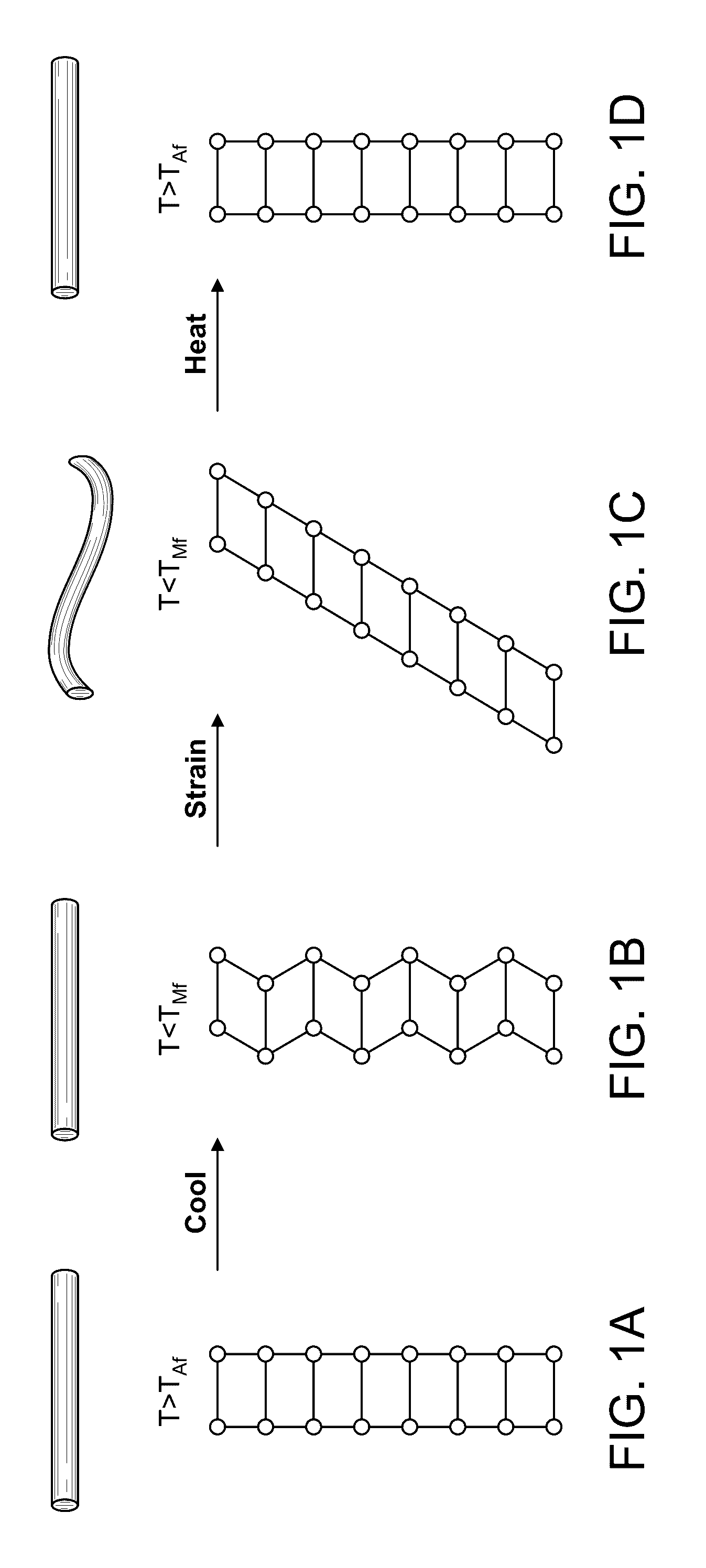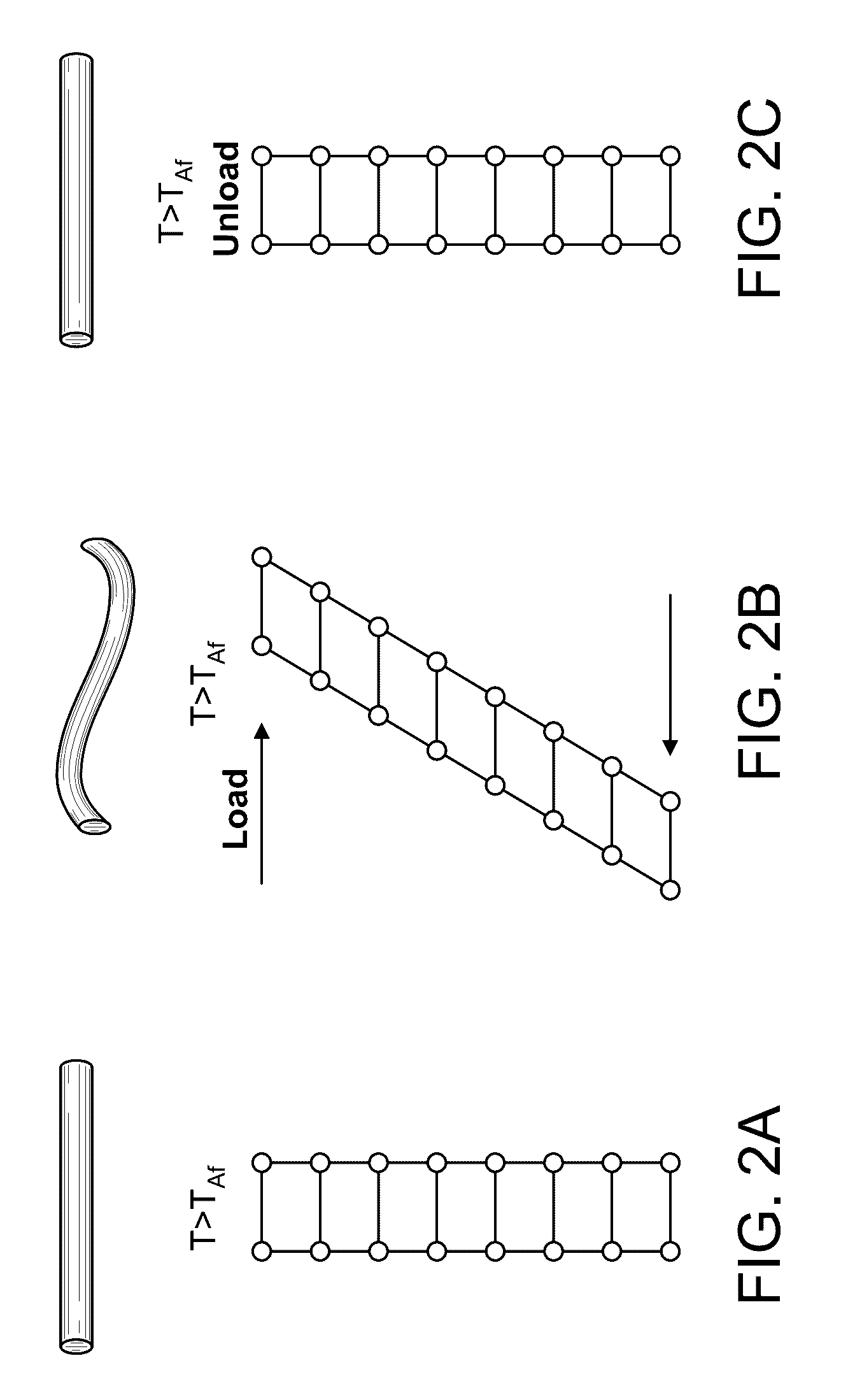Oligocrystalline ceramic structures for enhanced shape memory and pseudoelastic effects
a technology of oligocrystalline ceramics and shape memory, applied in ceramics, applications, other domestic objects, etc., can solve the problems of relatively low transformation stress and correspondingly low energy dissipation capability, ceramics, which are in general brittle materials, and can in general exhibit only very small shape memory strains and energy dissipation levels. , to achieve the effect of high strength, light weight and rapid response characteristi
- Summary
- Abstract
- Description
- Claims
- Application Information
AI Technical Summary
Benefits of technology
Problems solved by technology
Method used
Image
Examples
Embodiment Construction
[0021]The crystalline ceramic material structures provided herein exhibit the shape memory effect as well as pseudoelasticity without cracking or fracture, and with a high strain. These characteristics enable the application of the ceramic material structures provided herein to a wide range of applications that cannot be addressed by conventional brittle ceramic material structures.
[0022]The crystalline ceramic material structures provided herein include at least one crystalline ceramic structural feature that is configured to undergo the shape memory effect or a pseudoelastic effect. Both pseudoelasticity and the shape memory effect are due to martensitic transformations in the ceramic material structures. Martensitic transformations are diffusionless reversible transformations between two different crystal structures. During the transformations, the atoms of the ceramic material move small distances cooperatively, resulting in a different crystal structure, but the relative positi...
PUM
| Property | Measurement | Unit |
|---|---|---|
| temperature | aaaaa | aaaaa |
| volume fraction | aaaaa | aaaaa |
| grain size | aaaaa | aaaaa |
Abstract
Description
Claims
Application Information
 Login to View More
Login to View More - R&D
- Intellectual Property
- Life Sciences
- Materials
- Tech Scout
- Unparalleled Data Quality
- Higher Quality Content
- 60% Fewer Hallucinations
Browse by: Latest US Patents, China's latest patents, Technical Efficacy Thesaurus, Application Domain, Technology Topic, Popular Technical Reports.
© 2025 PatSnap. All rights reserved.Legal|Privacy policy|Modern Slavery Act Transparency Statement|Sitemap|About US| Contact US: help@patsnap.com



